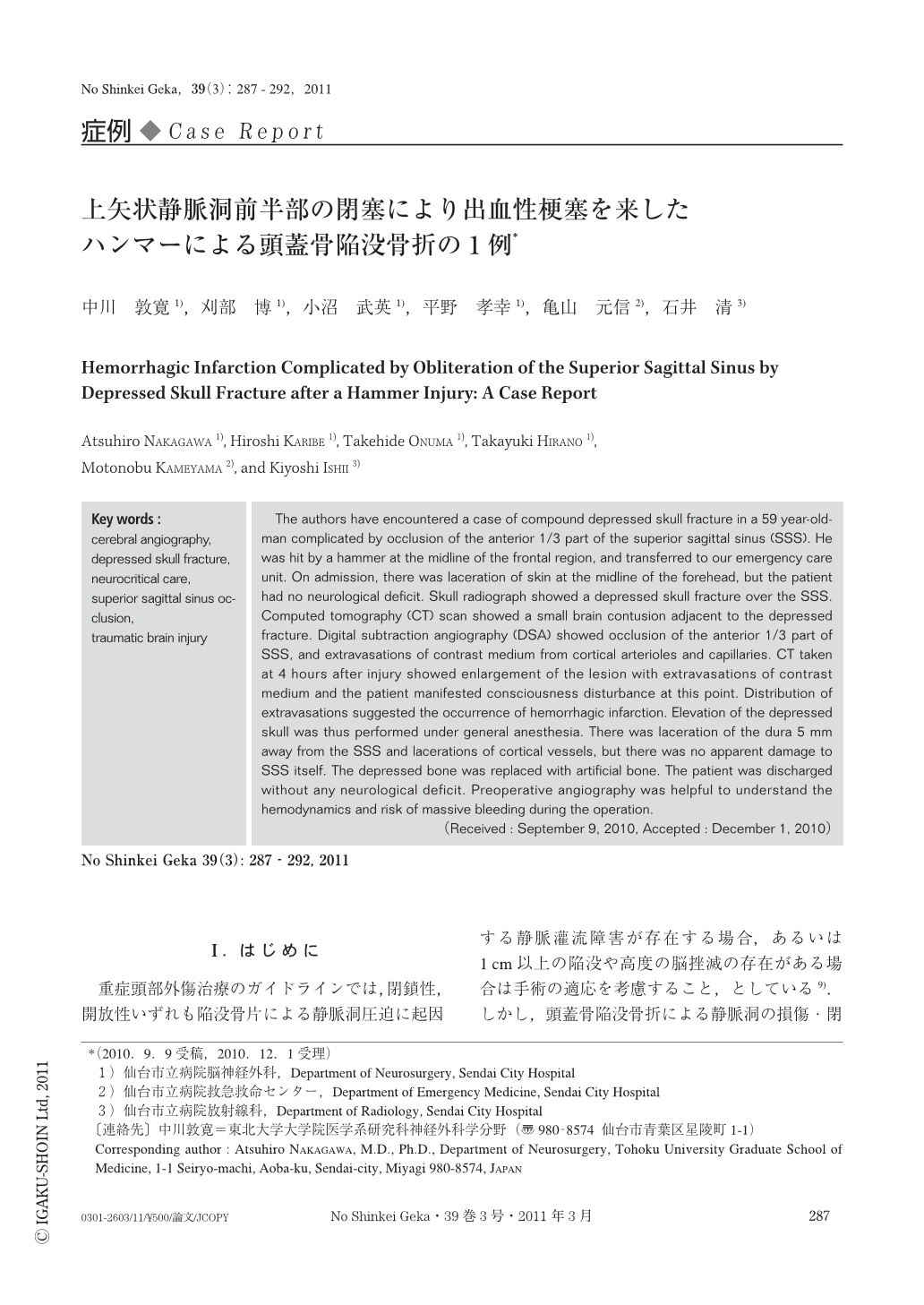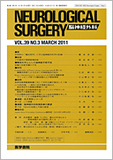Japanese
English
- 有料閲覧
- Abstract 文献概要
- 1ページ目 Look Inside
- 参考文献 Reference
Ⅰ.はじめに
重症頭部外傷治療のガイドラインでは,閉鎖性,開放性いずれも陥没骨片による静脈洞圧迫に起因する静脈灌流障害が存在する場合,あるいは1cm以上の陥没や高度の脳挫滅の存在がある場合は手術の適応を考慮すること,としている9).しかし,頭蓋骨陥没骨折による静脈洞の損傷・閉塞は稀であり,治療方針の決定は必ずしも容易ではない.特にsuperior sagittal sinus(SSS)上の頭蓋骨陥没骨折では,静脈洞から大量出血を来す可能性があることから,保存的治療を選択したとする報告が多いものの,止血が得られない場合,あるいは静脈洞閉塞による頭蓋内圧亢進や重篤な神経症状を呈する場合は緊急手術を要する11).また,中1/3から後1/3の部分にかけてのSSSの圧迫閉塞は急性期以後も頭蓋内圧亢進を生じ得ることから注意を要する3,7,13).今回,ハンマー殴打による頭蓋骨陥没骨折が原因でSSS前1/3の圧迫閉塞と静脈圧亢進によると思われる遅発性の出血性梗塞を呈した症例を経験した.前1/3の圧迫閉塞においても厳重な経過観察を要することが示唆されたため,神経放射線学的所見,病態,治療について若干の考察を加えて報告する.
The authors have encountered a case of compound depressed skull fracture in a 59 year-old-man complicated by occlusion of the anterior 1/3 part of the superior sagittal sinus (SSS). He was hit by a hammer at the midline of the frontal region,and transferred to our emergency care unit. On admission,there was laceration of skin at the midline of the forehead,but the patient had no neurological deficit. Skull radiograph showed a depressed skull fracture over the SSS. Computed tomography (CT) scan showed a small brain contusion adjacent to the depressed fracture. Digital subtraction angiography (DSA) showed occlusion of the anterior 1/3 part of SSS,and extravasations of contrast medium from cortical arterioles and capillaries. CT taken at 4 hours after injury showed enlargement of the lesion with extravasations of contrast medium and the patient manifested consciousness disturbance at this point. Distribution of extravasations suggested the occurrence of hemorrhagic infarction. Elevation of the depressed skull was thus performed under general anesthesia. There was laceration of the dura 5 mm away from the SSS and lacerations of cortical vessels,but there was no apparent damage to SSS itself. The depressed bone was replaced with artificial bone. The patient was discharged without any neurological deficit. Preoperative angiography was helpful to understand the hemodynamics and risk of massive bleeding during the operation.

Copyright © 2011, Igaku-Shoin Ltd. All rights reserved.


